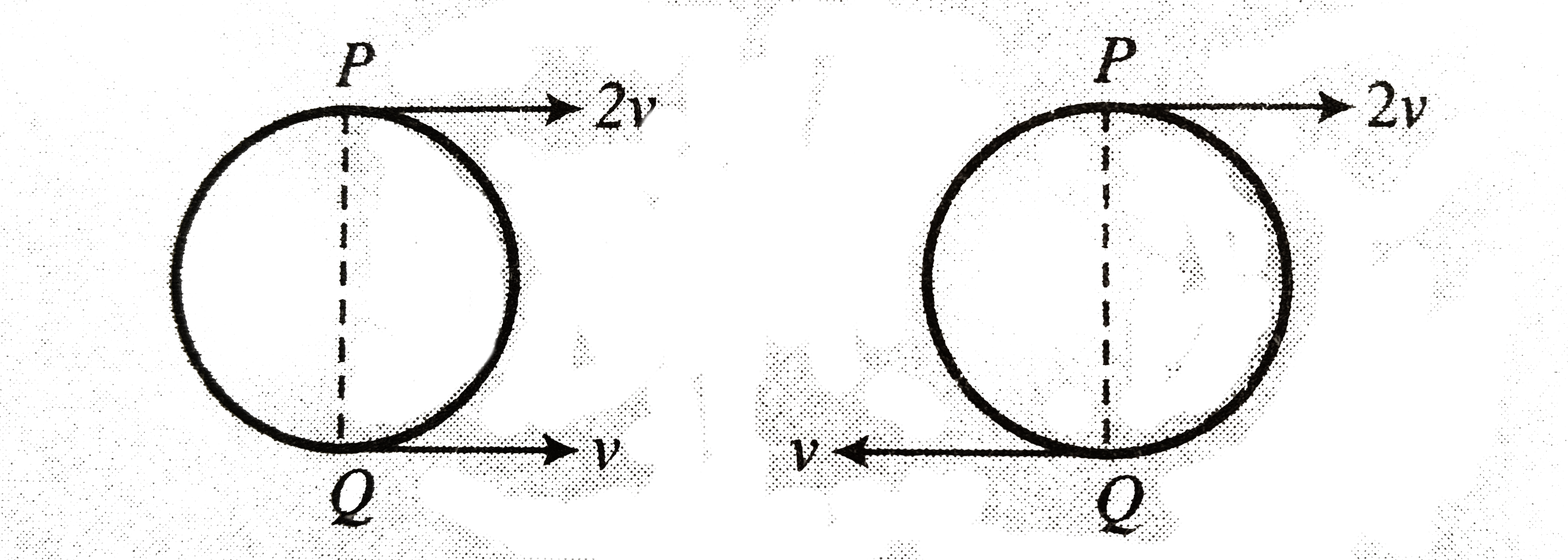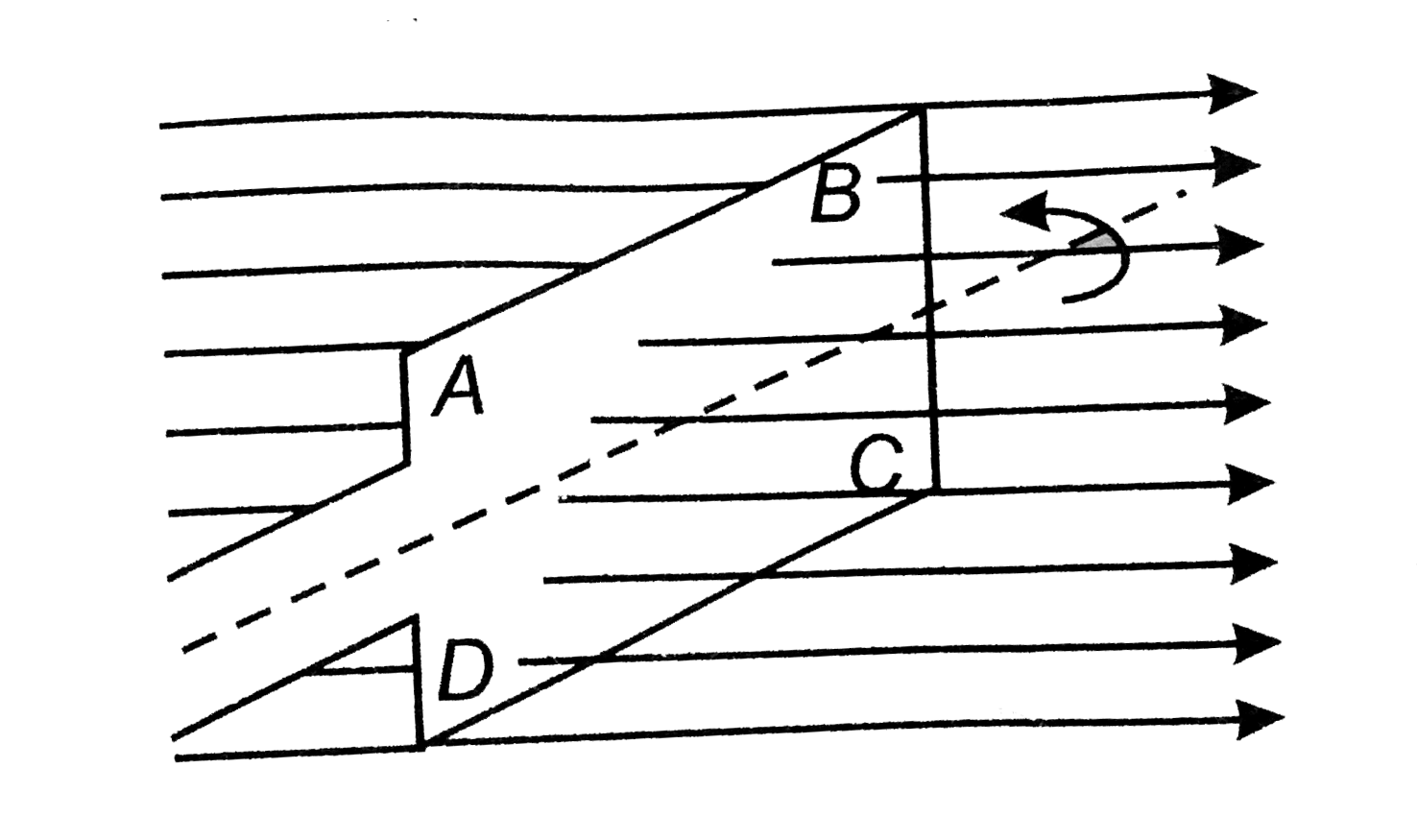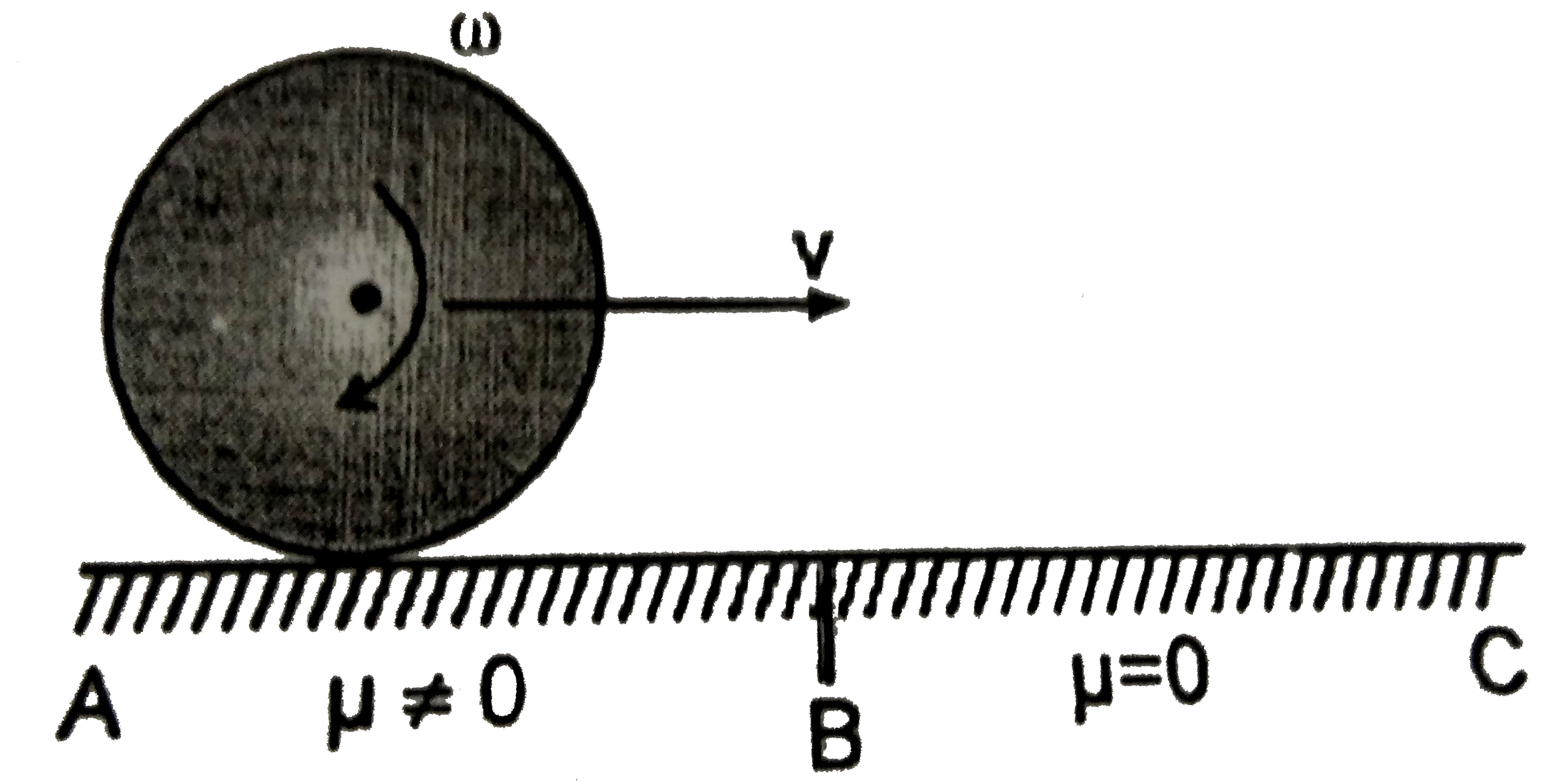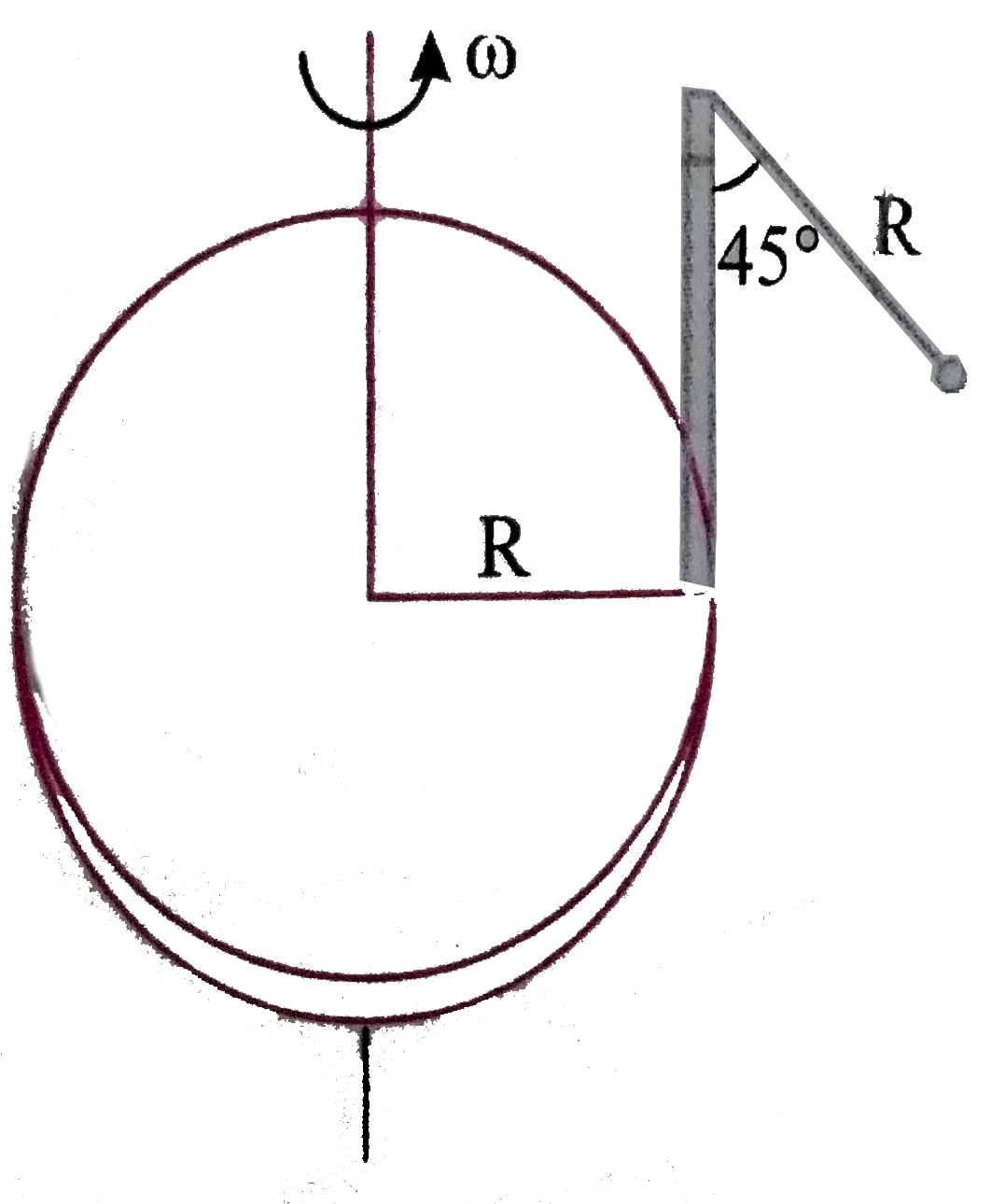When a disc rotates with uniform angular velocity, which of the following is not true ?
a. The sense of rotation remains same.
b. The orientation of the axis of rotation remains same.
c. The speed of rotation is non-zero and remains same.
d. The angular acceleration is non-zero and remains same.
The correct Answer is:d
To solve the question "When a disc rotates with uniform angular velocity, which of the following is not true?", we will analyze each statement provided in the options.
1. Understanding Uniform Angular Velocity:
- When a disc rotates with uniform angular velocity, it means that the angular velocity (ω) is constant over time. This implies that there is no change in the rate of rotation.
2. Analyzing Each Statement:
- Statement A: "The sense of rotation remains the same."
- This statement is true. Since the angular velocity is uniform, the direction of rotation does not change.
- Statement B: "The orientation of the axis of rotation remains the same."
- This statement is also true. For uniform angular velocity, the axis of rotation does not change its orientation.
- Statement C: "The speed of rotation is non-zero and remains the same."
- This statement is true as well. The speed of rotation, which is related to the angular velocity, is constant and non-zero.
- Statement D: "The angular acceleration is non-zero and remains the same."
- This statement is false. Angular acceleration (α) is defined as the rate of change of angular velocity (dω/dt). Since ω is constant in uniform angular motion, the angular acceleration is zero (α = 0).
3. Conclusion:
- The statement that is not true is Statement D: "The angular acceleration is non-zero and remains the same."
Final Answer:
The statement that is not true is D: "The angular acceleration is non-zero and remains the same."
---
- When a disc rotates with uniform angular velocity, it means that the angular velocity (ω) is constant over time. This implies that there is no change in the rate of rotation.
- Statement A: "The sense of rotation remains the same."
- This statement is true. Since the angular velocity is uniform, the direction of rotation does not change.
- Statement B: "The orientation of the axis of rotation remains the same."
- This statement is also true. For uniform angular velocity, the axis of rotation does not change its orientation.
- Statement C: "The speed of rotation is non-zero and remains the same."
- This statement is true as well. The speed of rotation, which is related to the angular velocity, is constant and non-zero.
- Statement D: "The angular acceleration is non-zero and remains the same."
- This statement is false. Angular acceleration (α) is defined as the rate of change of angular velocity (dω/dt). Since ω is constant in uniform angular motion, the angular acceleration is zero (α = 0).
- The statement that is not true is Statement D: "The angular acceleration is non-zero and remains the same."
The statement that is not true is D: "The angular acceleration is non-zero and remains the same."
Topper's Solved these Questions
- SYSTEM OF PARTICLES AND ROTATIONAL MOTIONSBOOK - NCERT FINGERTPS ENGLISHCHAPTER - SYSTEM OF PARTICLES AND ROTATIONAL MOTIONSEXERCISE - ASSERTION AND REASON
15 Videos
- SYSTEM OF PARTICLES AND ROTATIONAL MOTIONSBOOK - NCERT FINGERTPS ENGLISHCHAPTER - SYSTEM OF PARTICLES AND ROTATIONAL MOTIONSEXERCISE - Kinematics Of Rotational Motion About A Fixed Axis
3 Videos
- SYSTEM OF PARTICLES AND ROTATIONAL MOTIONSBOOK - NCERT FINGERTPS ENGLISHCHAPTER - SYSTEM OF PARTICLES AND ROTATIONAL MOTIONSEXERCISE - HOTS HIGHER ORDER THINKING SKILL
8 Videos
- PRACTICE PAPERSBOOK - NCERT FINGERTPS ENGLISHCHAPTER - PRACTICE PAPERSEXERCISE - All Questions
150 Videos
- THERMAL PROPERTIES OF MATTERBOOK - NCERT FINGERTPS ENGLISHCHAPTER - THERMAL PROPERTIES OF MATTEREXERCISE - Assertion And Reason
10 Videos
Similar Questions
A circular disc of radius R rolls without slipping along the horizontal surface with constant velocity v0 . We consider a point A on the surface of the disc. Then, the acceleration of point A is
View SolutionA stone is tied to one end of a string and rotated in horizontal circle with a uniform angular velocity. The tension in the string is T, if the length of the string is halved and its angular velocity is doubled , the tension in the string will be
View Solution
Knowledge Check
A rod of length l rotates with a uniform angular velocity omega about its perpendicular bisector. A uniform magnetic field B exists parallel to the axis of rotation. The potential difference between the two ends of the lrod is
ABl2ω2BzeroC(Bl2ω8)D2Bl2ω
Find the position of instantaneous centre of rotation and angular velocity of the disc in the following cases as shown. Radius of disc is R in each case.

View SolutionA cylinder of water, is rotating about its own axis with uniform angular velocity ω. The shape of free surface of water will be
View SolutionA rectangular coil ABCD is rotated anticlockwise with a uniform angular velocity about the axis shown In the fig. the axis of rotation of the coil as well as the magnetic field B are horizontally.the induced emf in the coilwould be minimum when the plane of the coil

View SolutionA rod of length l rotates with a uniform angular velocity omega about its perpendicular bisector. A uniform magnetic field B exists parallel to the axis of rotation. The potential difference between the two ends of the lrod is
View SolutionAs shown in the figure, a disc of mass m is rolling without slipping a angular velocity ω. When it crosses point B disc will be in :

View SolutionA disc of radius R has a light pole fixed perpendicular to the disc at its periphery which in turn has a pendulum of length R attached to its other end as shown in figure. The disc is rotated with a constant angular velocity ω The string is making an angle 45∘ with the rod. Then the angular velocity ω of disc is

View SolutionA non-conducting disc having unifrom positive charge Q, is rotating about its axis with unifrom angular velocity ω.The magnetic field at the centre of the disc is.

View Solution
